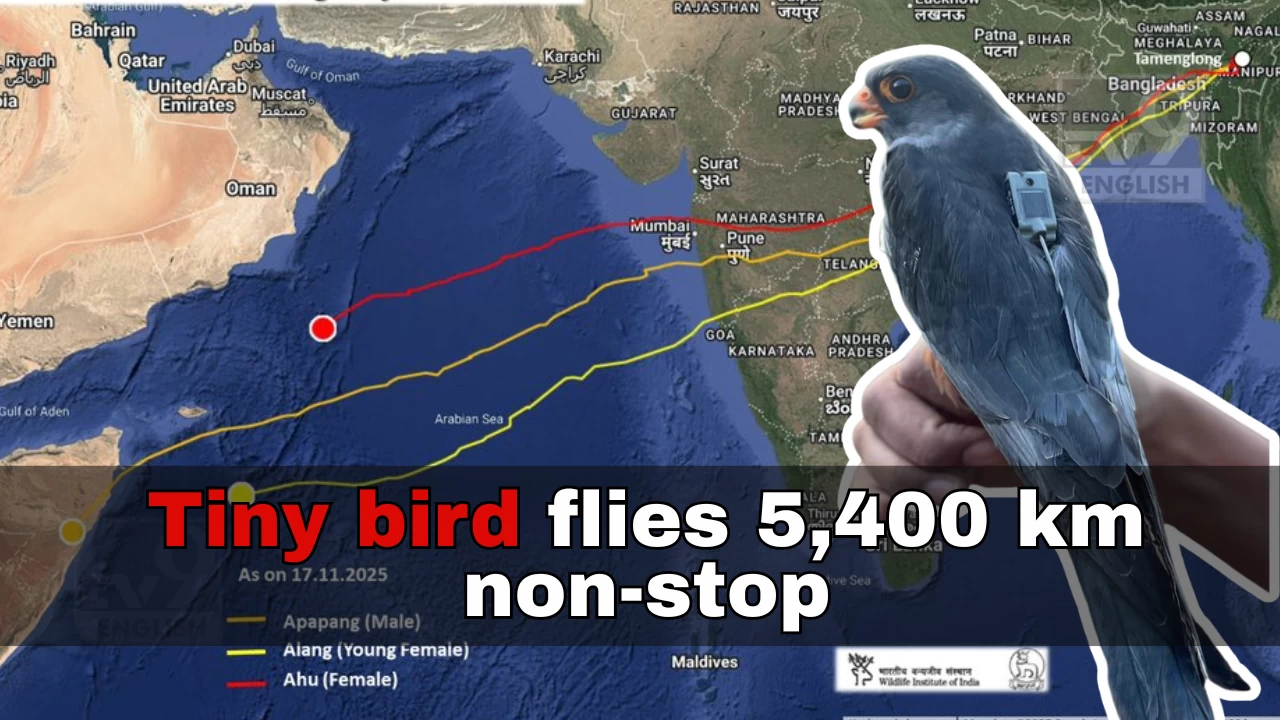

By signing in or creating an account, you agree with Associated Broadcasting Company's Terms & Conditions and Privacy Policy.


By signing in or creating an account, you agree with Associated Broadcasting Company's Terms & Conditions and Privacy Policy.

New Delhi: On November 11, three tiny Amur Falcons took off from Manipur’s forested skies. Five days later, one of them, Apapang, an adult male, had already crossed the Arabian Sea and landed in Somalia, clocking nearly 5,400 kilometres in just over five days. For a bird that weighs just 150 grams, that’s nothing short of mind-blowing.
Apapang was tagged by wildlife scientists just before the flight began, along with two other falcons: Alang (a young female) and Ahu (an adult female). All three are now part of one of the most extreme natural events we get to witness, bird migration, done on sheer instinct and wind.
Apapang’s tracking trail, marked orange on the satellite map, became a point of focus for conservationists and scientists after he launched into a non-stop journey soon after being tagged.
“Apapang has now done nearly 5400 km, and it has taken him 5 days and 15 hours,” said Supriya Sahu, additional chief secretary of Tamil Nadu's Environment Climate Change & Forests department, in a post on X (formerly Twitter).
In just 76 hours, Apapang had already flown 3,100 km, cutting across central India and exiting the mainland from the Gujarat coastline. That’s an average of 41 km/h (kilometres per hour) or 11.38 metres per second, nonstop, over three days. He then flew on across the Arabian Sea, without food, water, or rest, to reach the African coast.
Every year, thousands of Amur Falcons make a pitstop in India’s northeast, especially in Manipur and Nagaland. These stopovers are critical. They allow the birds to refuel, eating massive amounts of insects like dragonflies, termites, and locusts, before attempting the most dangerous part of their journey: a direct flight across the ocean to southern Africa.
The three birds were tagged by the Wildlife Institute of India under the Manipur Amur Falcon Tracking Project (Phase 2). Tagging lets scientists monitor their route, flight patterns, and survival challenges.
Manipur’s villagers, once known for hunting these birds, have now become protectors. Community-led efforts have turned the annual falcon arrival into a celebration of coexistence.
The Amur Falcon (Falco amurensis) breeds in parts of Siberia, Mongolia, and northern China. It winters in southern Africa. To get there, it flies across India and then takes a direct ocean route, over 5,000 km, with no land beneath.
Because of their extreme journeys, Amur Falcons are occasionally spotted in far-off places, like Sweden, Italy, or even the UK, when strong winds push them off course.








